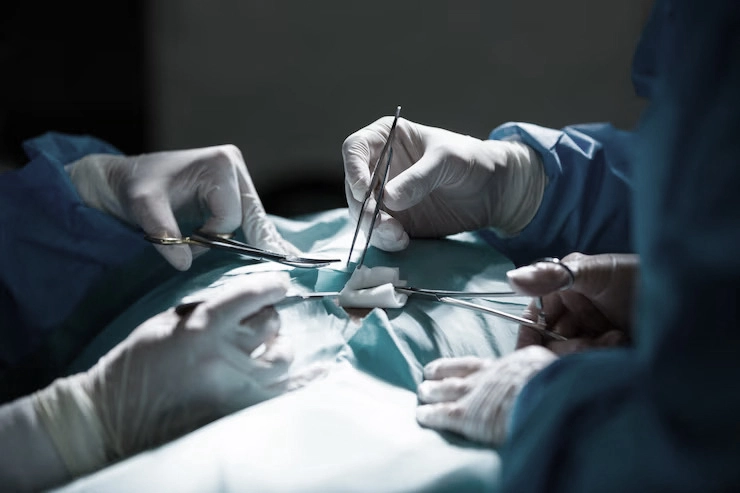In modern surgical practice, success depends not only on a surgeon's skill but also on the quality of materials used during procedures. Among the many essential tools in a surgeon’s kit, Polyester Suture and Bone Wax hold pivotal roles. These two products, although used in different contexts, contribute significantly to ensuring optimal outcomes for patients across various surgical disciplines. From cardiovascular procedures to orthopedic surgeries, the reliability of these materials can often mean the difference between seamless healing and complications.
In this blog, we will delve into the importance of Polyester Suture and Bone Wax, their applications in surgery, and why choosing the right supplier matters for both practitioners and patients alike.
Understanding Polyester Suture
A Polyester Suture is a non-absorbable, synthetic suture widely recognized for its strength and minimal tissue reactivity. Composed of polyethylene terephthalate, it is often coated with silicone or polybutylate to reduce tissue drag and enhance handling. This type of suture is most commonly used in cardiovascular, ophthalmic, and general surgery procedures where long-term tissue approximation is required.

Key Benefits of Polyester Suture:
- High Tensile Strength: Provides reliable wound support over long periods.
- Low Tissue Reactivity: Minimizes inflammation, making it suitable for sensitive tissues.
- Knot Security: Holds knots well, which is crucial in areas subject to high stress or movement.
- Versatile Usage: Frequently used in heart valve surgeries, vascular anastomosis, and hernia repairs.
The reliability and durability of Polyester Suture make it indispensable in scenarios where extended healing time is expected and where the structural integrity of the wound is critical.
The Essential Role of Bone Wax
While Polyester Suture is designed to approximate tissue, Bone Wax is a hemostatic agent used to control bleeding from bone surfaces during surgery. Composed of softened beeswax, paraffin, and other softening agents, Bone Wax is applied directly to bleeding bone to tamponade the bleeding and allow surgeons to maintain a clear surgical field.
Applications of Bone Wax:
- Orthopedic Surgeries: Frequently used in procedures involving the spine, skull, and long bones.
- Neurosurgery: Effective in reducing bleeding from cranial bones.
- Cardiothoracic Surgeries: Applied to the sternum during sternotomy procedures.
Advantages of Using Bone Wax:
- Immediate Hemostasis: Provides instant control over bone bleeding, enhancing surgical efficiency.
- Easy Application: Malleable and easy to mold, even in complex surgical sites.
- Reduces Blood Loss: Helps prevent complications from excessive intraoperative bleeding.
However, while Bone Wax is effective, surgeons must be cautious with its use to avoid potential issues such as delayed bone healing or granuloma formation. This makes it vital to choose high-quality Bone Wax from a trusted provider to ensure safety and efficacy.
Why Quality Matters: Choosing the Right Supplier
When selecting surgical supplies like Polyester Suture and Bone Wax, the quality of the materials can directly impact surgical outcomes. Inferior products may result in poor wound healing, increased risk of infection, or the need for re-operation.
This is where trusted suppliers such as Suture Planet come into the picture. Known for their commitment to quality and innovation, Suture Planet offers a range of surgical products manufactured under strict quality control protocols. Their Polyester Suture is crafted to provide unmatched strength and performance, while their Bone Wax ensures consistent and reliable hemostasis during critical procedures.
Surgeons around the world rely on reputable suppliers because they understand that surgical success depends not just on skill but also on the tools in hand. Whether operating in a rural clinic or a high-tech hospital, access to dependable surgical materials can make a life-saving difference.
Innovations and Future Outlook
As surgical technologies advance, so do the materials used in operating rooms. Innovations in suture coatings, biocompatibility, and absorbable alternatives are constantly evolving. While Polyester Suture continues to be a gold standard for certain procedures, researchers are exploring ways to enhance its performance even further through nanotechnology and biodegradable coatings.

Similarly, advancements in Bone Wax formulations are aimed at reducing post-operative complications and improving resorption rates, allowing for better integration with bone tissue. These developments not only enhance patient outcomes but also provide surgeons with more effective and safer options.
Conclusion
Both Polyester Suture and Bone Wax play indispensable roles in modern surgical practice. Their effectiveness in tissue approximation and hemostasis, respectively, make them staples in the operating room. For medical professionals seeking high-quality, reliable surgical products, choosing a trusted provider is non-negotiable.
With continued innovation and an emphasis on quality, products like Polyester Suture and Bone Wax will remain at the forefront of surgical excellence. By investing in the best tools, surgeons can ensure their patients receive the highest standard of care—each and every time.





Comments